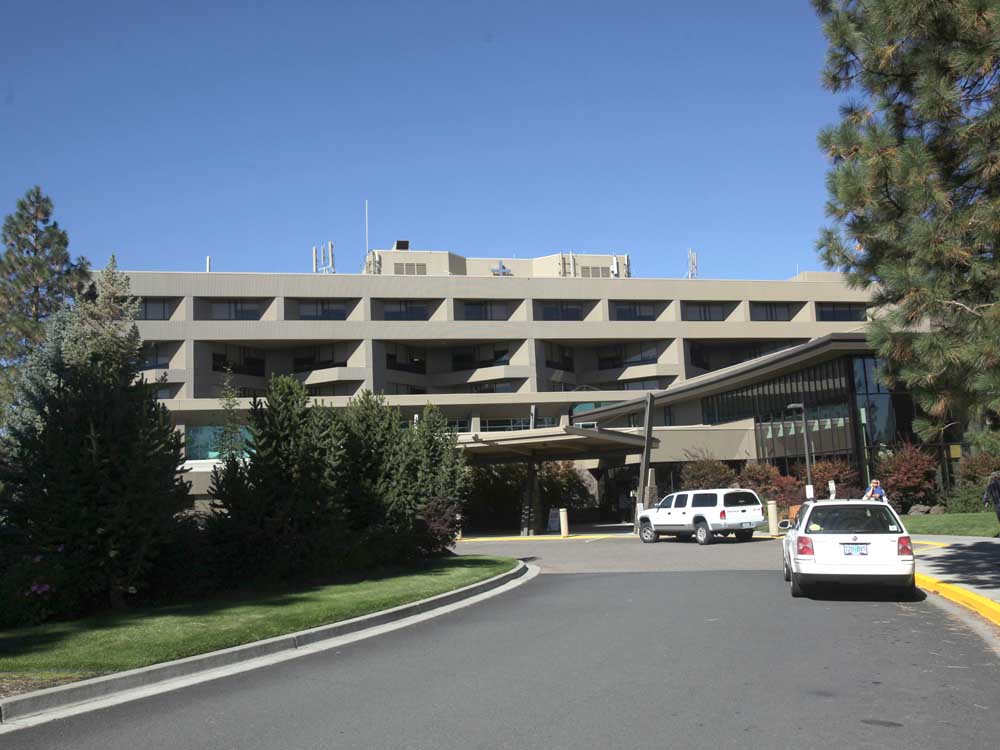Stock market losses drag down St. Charles earnings
Published 12:00 am Friday, April 12, 2019

- Members of the medical staff of St. Charles Bend may not criticize the quality of care at the hospital publicly. (Bulletin file photo).
Investment losses offset solid earnings for the St. Charles Health System in 2018 after the stock market tanked at the end of the year, but a first-quarter rebound this year has the hospital’s financials back on track.
Audited financial statements released this month show the not-for-profit hospital system had a net operating income of $24 million last year on revenues of $772 million. That tracked closely to earnings of $24 million in 2017 on $749 million in revenues.
“If you look at those numbers, they’re rock stable,” said Martin Arrick, managing director at Standard & Poor’s, a financial services firm in New York City. “They’re doing a great job with the things they can control.”
The hospital system successfully transitioned to a new electronic records system for its four hospitals and all its outpatients clinics last year, and reinvested $60 million in 2018 and $71 million in 2017 into its facilities. That includes the construction of a new Bend patient tower, set to open May 19, a renovation of a patient tower, and the construction of a clinic in La Pine.
“(St. Charles) still managed, despite the strong headwinds in health care, to generate an operating margin of 3.1%, which is right in line with what the rating agencies would expect us to perform to,” said Jenn Welander, CFO for the hospital system.
A $23 million investment loss, combined with other adjustments, left it with a net loss of $5 million for the year. Hospitals systems are required to have extensive cash and investments to fund operations in the event of an economic downturn, and they typically invest their holdings in a mix of stocks and bonds.
Most hospital systems that have a Dec. 31 end to their fiscal year posted investment losses last year. Over time, however, hospital investments tend to more than recoup their losses. In 2017, for example, when the stock market posted double-digit gains, St. Charles reported an investment gain of more than $56 million.
“This is likely just a hiccup that most in the sector experienced,” said Kevin Holloran, senior director and leader of the not-for-profit health care group at Fitch Ratings, “and not indicative of any long-term trends.”
According to the hospital industry magazine Modern Healthcare, 12 of the nation’s largest not-for-profit health systems ended 2018 with investment losses, totaling a combined $3.7 billion.
Ratings services look for hospitals to have a balanced portfolio of investments, with a fairly even distribution of stocks and bonds. A more aggressive mix can bring higher returns, but also leave a system at risk for investment losses.
“On the other hand, if you’re too conservative, you end up leaving money on the table,” Arrick said.
St. Charles allocates about 50% of its investments to stocks, 38% to bonds, and 10% to real estate investment trusts. The hospital uses a long-term investment strategy allowing the investments to grow over time, and relies on operating income and tax deductions for depreciation to fund its capital expenses. In 2018, those combined for $64 million, allowing the hospital to leave its investment portfolio untouched.
“We do not take money out of it,” Welander said. “In the decade that I’ve been here, we have only put money into it.”
Arrick said St. Charles’ solid financials allow the medical system more of a margin of error with investments. Investment losses can reduce the hospital system’s days of cash on hand and shift the ratio of assets to debt. But unless those losses become a trend, most analysts and hospital finance experts don’t worry too much about a down year.
“From time to time, you’re going to have an investment loss,” Arrick said.
Welander said revenues over the first quarter of 2019 were within the hospital’s target range, although expenses were higher than expected. That was, in part, because a bad flu season has kept patients in the hospital for longer. Because hospitals are generally paid a fixed amount per diagnosis, if a patient stays six days instead of two, the hospital eats those additional costs.
Expenses were higher in the first quarter as St. Charles prepares to open its new tower, requiring the hiring and training of additional staff. The March snowstorm required additional spending for overtime and premium pay.
The hospital system is seeing a drop in elective procedures as people’s deductibles were reset at the start of the new year. Charity care in the first quarter ticked upward.
“More and more of our charity care is going to people with commercial insurance, due to high deductibles,” Welander said. “It’s too early to say it’s a trend.”
Nonetheless, the hospital system is targeting a healthy 3% operating margin for 2019.
— Reporter: 541-633-2162, mhawryluk@bendbulletin.com


